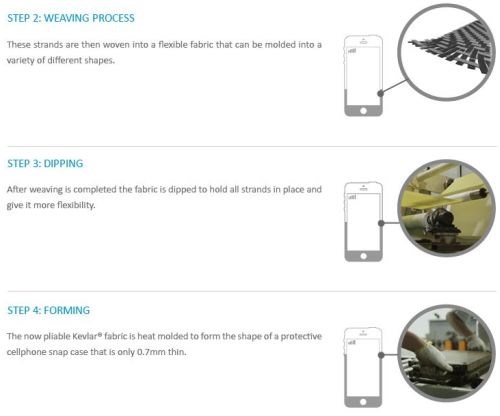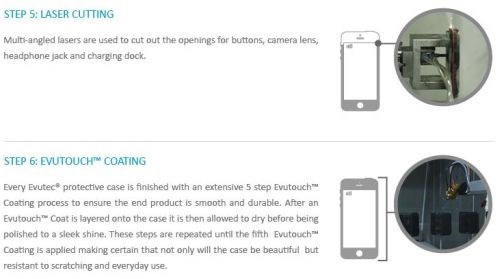Composite phone cases at CAMX
Keyrou showcased its Evutec brand design and production capabilities as it seeks new applications for its high-volume, advanced composite molding processes.
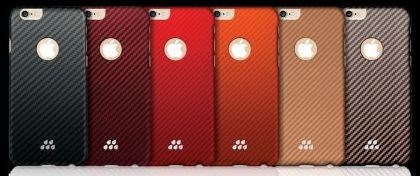
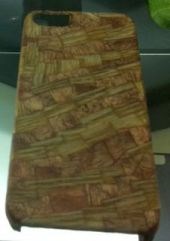
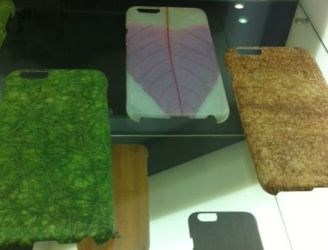
|
Evutec composite snap cases for smart phones are made by Keyrou
using its proprietary 6D process. SOURCE: Keyrou.
The CAMX 2014 (Oct. 13-16, Orlando, FL, US) exhibit floor featured a wide array of new materials and products for the composites industry. One that particularly intrigued me was by the large exhibit area for Keyrou, which displayed row after row of unique and attractive phone snap cases, all of which were touted as using composites featuring Kevlar fiber for impact resistance.
The three main design themes were (1) unusual natural materials, (2) wood and (3) the Karbon line, which features the iconic “carbon fiber” weave but with colors like red, blue and orange, achieved with colored Kevlar. The natural materials included colored natural fibers, cork and even a case made from a shell veneer resembling mother of pearl. The wood cases — including bamboo, black apricot and ebony — are made using veneers from 100 % Forest Stewardship Council (FSC, Minneapolis, Minn., USA) certified farmed wood.
In order to get a better understanding, I talked to David Rojas, director of design for this new brand Evutec (Walnut, Calif.). Here is how he explained it to me. Keyrou is the manufactory for Xin Xiu Electronics Co., Ltd. (Dongguan, Guangdong, China) which has produced over 13 million Kevlar composite components for Motorola used in their Razr and Razr MAXX HD phones. Evutec showcases Keyrou’s unique composites and design technologies. Keyrou manufactures all of the Evutec cases.
Rojas explains, “Most structures made for phones and electronics generally use 3-D molding, which produces C-shaped edges that are easy to remove from the production tools. Keyrou has developed its proprietary 6D process that achieves full encapsulation of all edges, so that return flanges are gorgeous. It uses laser cutting to remove the parts and enables seamless parts with flawless finish requiring no further gluing or assembly at volumes of up to 10,000 per day.”
Rojas says Keyrou’s processing uses thermoset polymers with the mixture of Kevlar and other materials. “The Kevlar gives us demonstrable shock resistance,” says Rojas. The Evutec web-site shows phone drops and also outlines the 6D process steps:
Steps in Keyrou’s 6D composite molding process. SOURCE: Keyrou.
Rojas says Keyrou is exploring where its advanced composite molding technologies might enable new applications, “for example automotive, but also aerospace and military, where fibers like Kevlar are already well-proven.”
Related Content
-
Composite molding compound replaces Invar for lightweight small satellite structures
Patz Materials and Technologies and Lawrence Livermore National Laboratory developed a new monolithic optics housing with 80% less weight, near-zero CTE and the high-volume manufacturing required for commercial space.
-
Carbon fiber satellite arm reduces weight, simplifies assembly onto naval vessels
Satcom developer EM Solutions partnered with ACS Australia to replace an aluminum arm design with a 65% lighter, one-piece, corrosion-resistant carbon fiber/epoxy alternative.
-
TU Munich develops cuboidal conformable tanks using carbon fiber composites for increased hydrogen storage
Flat tank enabling standard platform for BEV and FCEV uses thermoplastic and thermoset composites, overwrapped skeleton design in pursuit of 25% more H2 storage.







